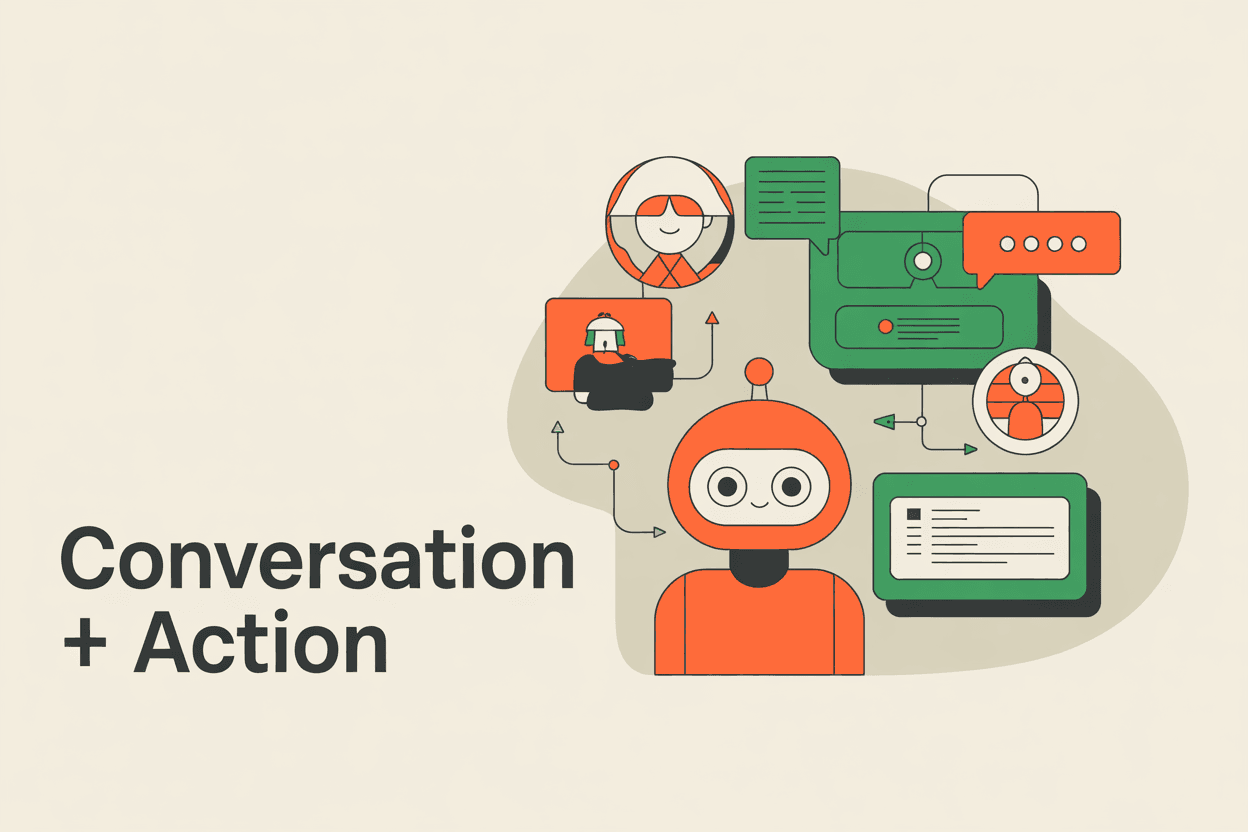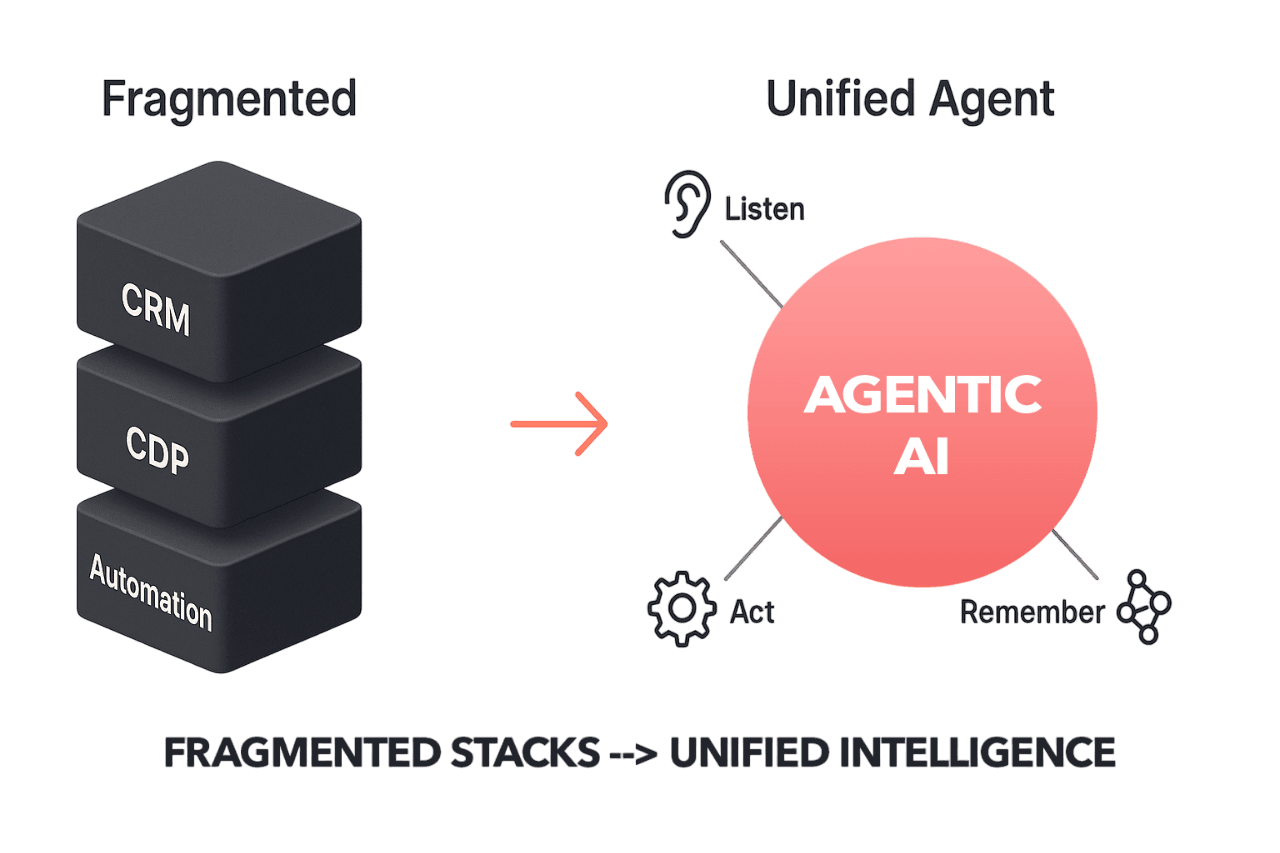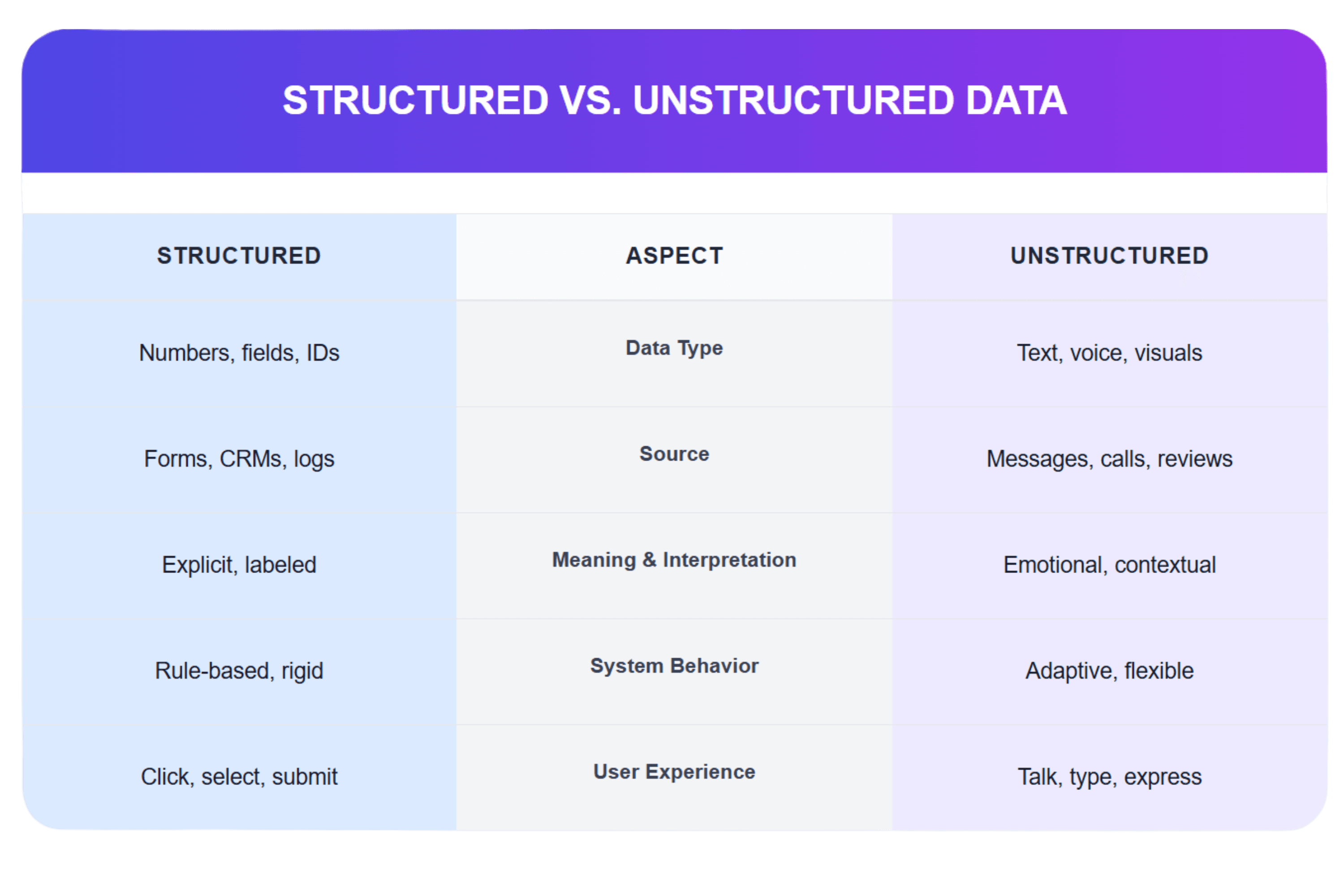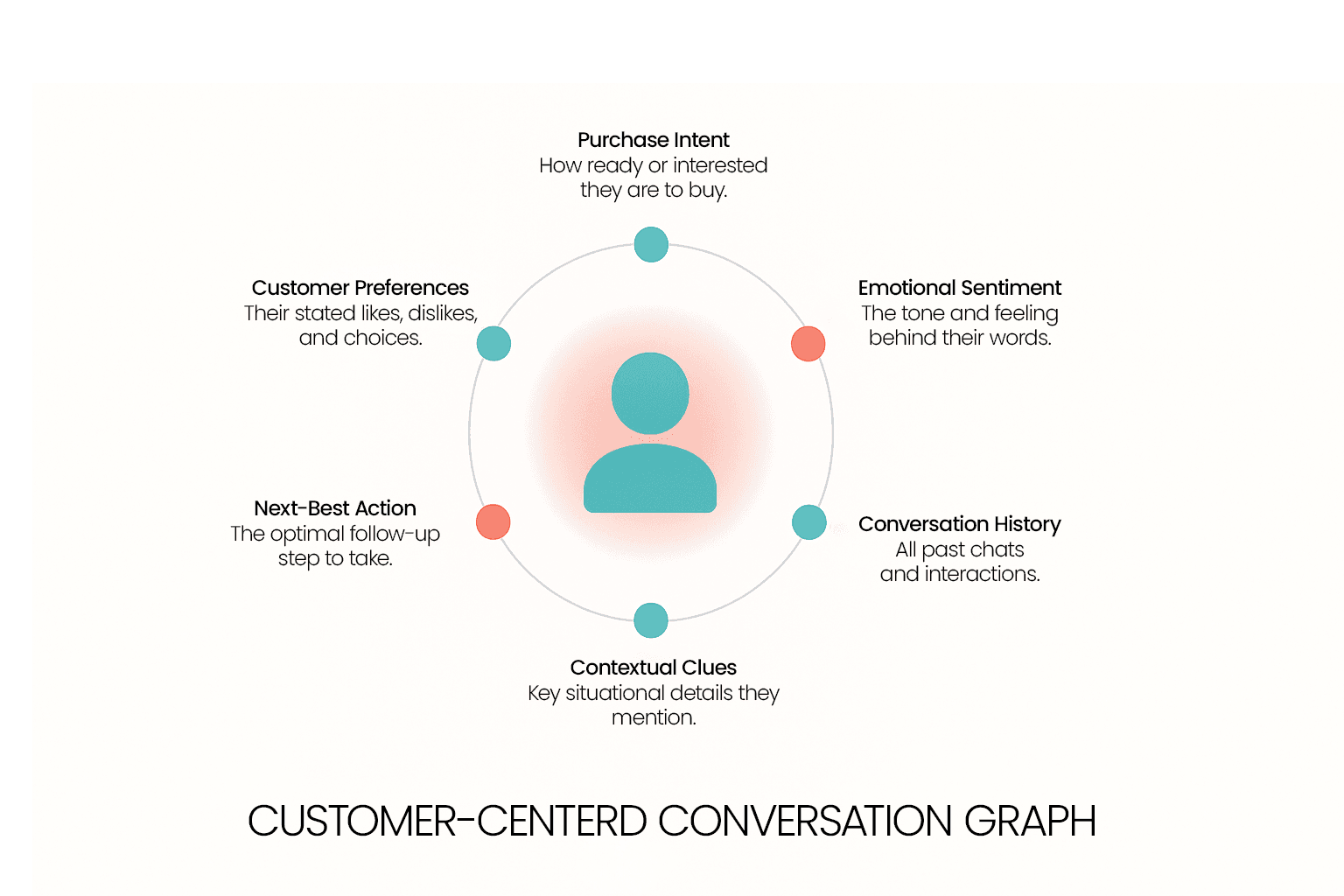From System of Records to System of Action

Over the past two decades, modern business has been built on structured data. Rows and columns in spreadsheets. IDs and timestamps in CRMs. Event logs and drop-down fields in marketing automation tools. Structured data was the bedrock of scale it enabled systems to communicate, analytics to be run, and funnels to be tracked. But we’re now reaching the edge of what structured systems can comprehend.
The explosion of digital channels, conversational interfaces, customer behaviour across touchpoints, and artificial intelligence has made one thing clear: the future will belong to systems that natively understand, store, and act on unstructured data.
The Legacy of Structured Systems: CRM, CDP, and Automation
To understand this shift, it’s worth tracing the lineage of the platforms we rely on today and why their foundational assumptions are starting to crack.
In the early 2000s, CRM systems like Salesforce emerged as the central hub of customer relationships. They were built to store well-defined objects: Leads, Contacts, Accounts, Deals. Each had fields like name, status, lifecycle stage, and owner. Marketing platforms such as HubSpot and Marketo added engagement tracking clicks, email opens, form submissions and layered automation logic on top. Everything had to be event-driven, tagged, or scored to be usable.
When Structured Worked: Simpler Journeys, Simpler Tools
This approach worked remarkably well when customer journeys were linear, digital signals were narrow, and interaction modes were few. The marketing automation stack was effectively a high-functioning calculator if a lead clicks an email, assign 10 points; if they download a whitepaper, assign 20 more. It was deterministic, clean, and structured.
CDPs and the Illusion of Comprehensiveness
The rise of Customer Data Platforms (CDPs) in the 2010s, like Segment, mParticle, and Tealium, attempted to unify structured data from websites, mobile apps, and product telemetry. These platforms became the system of record for customer behavior storing everything from last purchase date to preferred language to campaign UTM source.
For a while, this worked. CDPs powered segmentation. CRMs handled pipeline. Marketing automation platforms like Braze and WebEngage handled workflows. This triumvirate CDP + CRM + Marketing Automation formed the backbone of modern martech.
Why the Future Will Be Built on Systems Natively Designed for Unstructured Data
But all of these systems were built on a shared assumption: that customer data is structured, tagged, and originates from systems not humans.
That’s no longer true.
Today, the majority of customer interaction is unstructured—from messages sent over WhatsApp and Instagram DMs, to support tickets, call transcripts, live chat, product reviews, and social comments. According to IDC, over 80% of enterprise data is unstructured, and growing at nearly twice the rate of structured data (IDC, 2022).

In marketing and sales, this shift is profound. A prospect may send a message that reads: “I’ve been looking at your pricing seems a bit much for our stage. Can you help?” Traditional systems can’t interpret that. There's no checkbox for “price sensitivity” or a dropdown for “tone: hesitant.” Yet within that one message lies rich signals: interest, hesitation, budget concern, urgency.
Legacy systems flatten this information if it’s stored at all. CRMs log it as “activity.” CDPs ignore it. Automation platforms can’t trigger on it. And marketing teams are left blind to the most human parts of the customer journey: intent, emotion, mood, resistance, curiosity.
This is why unstructured data voice, text, chat, intent, memory must become the new foundation.
Forces Powering the Shift to Unstructured-Native Systems
What’s driving this transformation?
First, the channels themselves have changed. Messaging platforms like WhatsApp, Instagram, Telegram, and WeChat dominate customer interactions. According to Meta, over 1 billion users message businesses every week on WhatsApp alone. These aren’t form fills or checkboxes they’re fluid, contextual conversations.

Second, AI has caught up. With large language models (LLMs) like GPT-4, Claude, and open-source alternatives, machines can now interpret unstructured data with remarkable accuracy. This means systems can infer intent, detect emotion, classify sentiment, and even generate relevant responses in real time.
Third, customer expectations have shifted. According to Salesforce’s 2023 State of the Connected Customer report, 73% of customers expect brands to understand their unique needs and context, not just send blast messages based on past clicks. Unstructured data is where that context lives.
Despite this, most current systems are being retrofitted to work with LLMs. You’ll see CRMs adding “AI assistants,” or CDPs offering “text field parsing.” These are add-ons, not foundations. It’s like bolting an engine onto a bicycle and calling it a car.
That’s why a new category of systems is emerging those that are natively built on unstructured data.
These platforms don’t force customers into forms. They listen. They don’t require manual tagging. They understand. They don’t separate engagement from memory. They unify it.
Zigment: A Natively Agentic Approach to Customer Journeys
Take Zigment, a new breed of Agentic AI platform designed specifically for customer journeys. Rather than integrating a CDP, chatbot, and automation system, Zigment operates as a single agentic layer that engages, understands, remembers, and acts across all channels. When a customer writes a message, Zigment doesn’t just respond it classifies mood, identifies buying stage, tracks past intent, and triggers the next best action automatically.
Conversation Graphs: Where Memory Meets Action
This isn’t just an improvement in interface it’s a paradigm shift in architecture. Every conversation, across WhatsApp, Instagram, email, or webchat, feeds into a unified Conversation Graph a timeline that stores sentiment, intent, emotion, and action. No separate tools. No middleware. No lag between insight and action.

While startups like Lindy.ai or Inflection’s Pi are experimenting with intelligent assistants and AI agents for general productivity, most of these are still task-specific or user-bound. Zigment represents a broader shift: enterprise-grade agentic systems that handle end-to-end customer journeys across marketing, sales, and support natively on unstructured data.
The Gradual Decline of Structured-Only Systems
So what happens to existing systems?
They won’t disappear overnight. CRM giants will continue to operate. CDPs will serve data infrastructure needs. But over time, their relevance will shift from front-line orchestration to back-end archival. The systems of action the ones that actually talk to customers, understand them, and drive outcomes will move upstream to agentic platforms.
It’s a replay of past transitions. The mainframe gave way to desktop software. Desktop apps gave way to cloud SaaS. SaaS is now giving way to autonomous, real-time, context-aware systems built on language, not forms.
Replatforming for Relevance: Toward Systems That Understand
Businesses that continue to operate on structured-only systems will soon find themselves unable to detect key buying signals, slow to respond across modern channels, and blind to what customers are actually saying.
The winners will be those who replat form not just to AI, but to unstructured-native, agentic architectures. Systems that don’t just record data, but make meaning from it. That don’t just automate, but understand.
The future isn’t made of forms. It’s made of conversations. And only systems that were born for that world will thrive in it.
